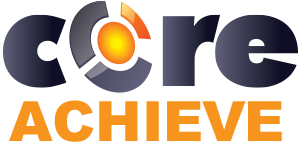LMS for the Fall and Winter Season: Preparing for More Business and Trainees
October, 10 2023
Other posts:
Enhancing Team Dynamics for Effective Group Decision-Making with LMS Integration
Organizations increasingly rely on collaborative efforts to solve complex problems, innovate, and adapt to change, but how do we ensure that collaboration is happening.
Maximizing Small Business Potential with Training Technology
Training technologies can push small businesses ahead of their competitors, but what are the factors that go into choosing the right technology?
Unlocking Employee Potential: The Transformative Benefits of an Interactive Learning Management System (LMS)
Interactive training allows for unlocking employee potential, but how is it done?
Building a Robust Sales Pipeline with Training
Every organization wants a streamlined sales pipeline, but building one requires a series of interlocking activities with one of the most important being training.
Strategies for Adapting In-Person Training to Online Platforms
Online training is one of the most flexible ways of delivering training across organizations, but how do you even begin to adapt in-person training into online?
The fall and winter seasons are some of the busiest times for organizations, but with this spike in demand requires training seasonal employees. How can an organization guarantee seasonal employees get proper training?
As the fall and winter seasons approach, businesses across the country are gearing up for an annual influx of seasonal hires. Whether an organization is a retail store or an e-commerce operation, their likely familiar with the challenges of onboarding and training new temporary employees quickly and efficiently. A Learning Management System (LMS) is a key-piece for alleviating these onboarding challenges.
The Seasonal Hiring Challenge
The fall and winter seasons bring unique opportunities and challenges for organizations. The holiday season, increased travel, and lingering budgets create higher demand industries across the world. While demand goes up, so does the needs of the organization leading to a surge of seasonal employees. These seasonal employees do present some new challenges for the organization, like overloading and cost-efficiency.
Onboarding Overload
Training a large number of employees in a short timeframe can be overwhelming for trainers—leading to new employees to receive less attentive and less effective training.
Consistency Concerns
Ensuring consistent training and adherence to company standards can be challenging when dealing with a high turnover of temporary staff. Consistency problems are only exacerbated in the holiday season with some of the most stressful and high-energy times.
Time Sensitivity
Seasonal hires need to be trained swiftly to start contributing to the business during the peak season. This time crunch snowballs into all the other problems above.
Cost-Efficiency
Balancing the need for effective training with budget constraints is a constant struggle.
How an LMS Can Help
Standardized Training Modules
LMS platforms allow organizations to create standardized training modules that cover essential topics like customer service, safety procedures, and product knowledge. These modules ensure that every seasonal hire receives the same foundational training. An organization can also produce seasonal specific training.
Accessibility and Convenience
With an LMS, training materials are accessible 24/7 from any location with an internet connection. This flexibility means that seasonal employees can complete their training regardless of where they are.
Scalability
LMS platforms are scalable, allows organizations to accommodate many users without additional logistical challenges. Organizations can easily onboard hundreds of seasonal hires with a simple change in price but without overloading their training team.
Assessment and Progress Tracking
An LMS provides assessment tools to evaluate employees' understanding of the material. Managers can track progress, identify areas where additional support is needed, and ensure that seasonal hires are meeting training benchmarks.
Cost-Effective Training
Traditional training methods, such as in-person sessions, can be costly and time-consuming. LMS platforms provide a cost-effective alternative by reducing the need for physical training materials and in-person trainers.
Retention of Knowledge
Seasonal hires may return in subsequent years. An LMS allows organizations to store training materials and track individual progress, making it easier to reintegrate experienced seasonal staff in the future.
Real-time Updates
If there are changes in procedures, products, or policies during the season, you can quickly update training materials on the LMS, ensuring that all seasonal employees are working with the most up-to-date information.
As the fall and winter seasons approach, businesses can turn the challenges of the season into growth with seasonal hires. Implementing an LMS can streamline the onboarding and training processes for a temporary workforce, ensuring that seasonal hires are well-prepared to contribute during the busiest times. By providing standardized training, customizing learning paths, and offering accessibility and scalability, an LMS empowers a business to make the most of the seasonal influx, while also setting the stage for efficient training and onboarding in the years to come.
Get started with CoreAchieve today for free.
Photo by Yoaqi on Unsplash

Leave comment: